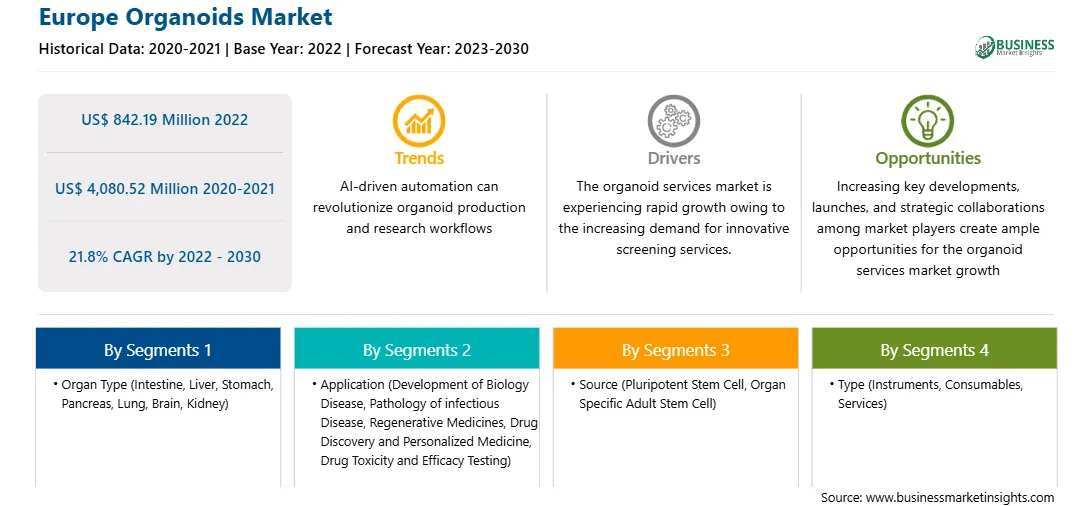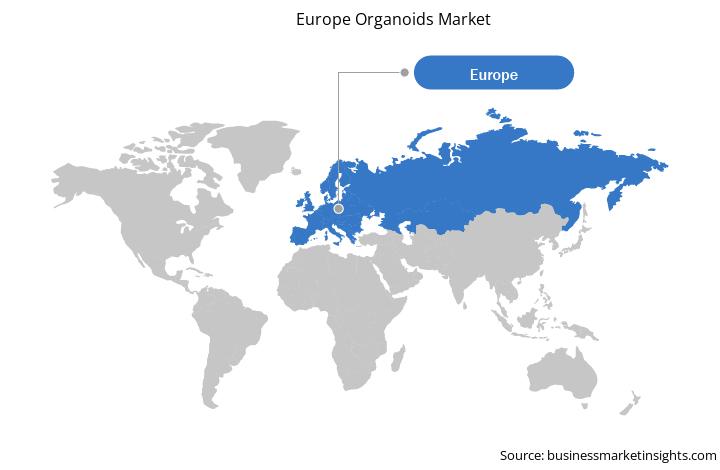Personalized medicine, also known as precision medicine, is a medical model that practices procedures or drugs tailored to the individual patient based on the projected response or risk of disease. According to a study published by Personalized Medicine Coalition (PMC), personalized medicines accounted for only 5% of the new FDA-approved molecular entities in 2005, whereas they accounted for more than 25% in 2016. Additionally, 42% of all compounds and 73% of oncology compounds in the pipeline have the potential to be personalized medicines. Moreover, biopharmaceutical companies nearly doubled their R&D investment in personalized drugs over the past five years, which is likely to increase by 33% in the next five years. Biopharmaceutical researchers also predict a 69% increase in the development of personalized medicines over the coming five years.
The implementation of organoids to create personalized drug therapies provides exciting opportunities for improving patient care. In addition, pharmacists play an essential role in increasing the demand for personalized medicines as they proactively educate and create awareness about precision medicine. Recent research has highlighted that more than 50% of consumers are interested in purchasing customized products or services. This demand has persuaded pharmaceutical research to develop more tailored treatments to make medicines safer and more effective.
Personalized cancer medicine is an approach to tailoring effective therapeutic strategies for each patient according to a tumor’s genomic characterization. There is an increasing demand for research in personalized tumor modeling to confirm the functional aspects of genomic drug response predictions in the preclinical setting. Numerous studies have highlighted the application of tumor organoids in personalized cancer medicine in terms of gene–drug association treatment, identification of new therapies, and prediction of patient outcomes.
Personalized cancer therapy applies specific treatments to each patient. Using personalized tumor models with similar characteristics to the original tumors may result in accurate predictions of drug responses in patients. Tumor organoid models have several advantages, such as conserving the molecular and cellular composition of the original tumor over pre-existing models. These advantages highlight the tremendous potential of tumor organoids in personalized cancer therapy, particularly in preclinical drug screening and predicting patient responses to selected treatment regimens.
The Europe organoids market is sub-segmented into Germany, France, Italy, the UK, Spain, and the Rest of Europe. The regional market growth is associated with the rising demand for tissue engineering and organ transplantation; increasing adoption of organoids for disease modeling, gene mutation, and tumor modeling; and growing research activities on organoids. In addition, factors such as increased funding and public–private investments will likely add more opportunities in the coming years in the region.
Strategic insights for the Europe Organoids provides data-driven analysis of the industry landscape, including current trends, key players, and regional nuances. These insights offer actionable recommendations, enabling readers to differentiate themselves from competitors by identifying untapped segments or developing unique value propositions. Leveraging data analytics, these insights help industry players anticipate the market shifts, whether investors, manufacturers, or other stakeholders. A future-oriented perspective is essential, helping stakeholders anticipate market shifts and position themselves for long-term success in this dynamic region. Ultimately, effective strategic insights empower readers to make informed decisions that drive profitability and achieve their business objectives within the market. The geographic scope of the Europe Organoids refers to the specific areas in which a business operates and competes. Understanding local distinctions, such as diverse consumer preferences (e.g., demand for specific plug types or battery backup durations), varying economic conditions, and regulatory environments, is crucial for tailoring strategies to specific markets. Businesses can expand their reach by identifying underserved areas or adapting their offerings to meet local demands. A clear market focus allows for more effective resource allocation, targeted marketing campaigns, and better positioning against local competitors, ultimately driving growth in those targeted areas.Europe Organoids Strategic Insights

Europe Organoids Report Scope
Report Attribute
Details
Market size in 2022
US$ 842.19 Million
Market Size by 2030
US$ 4,080.52 Million
Global CAGR (2022 - 2030)
21.8%
Historical Data
2020-2021
Forecast period
2023-2030
Segments Covered
By Organ Type
By Application
By Source
By Type
Regions and Countries Covered
Europe
Market leaders and key company profiles
Europe Organoids Regional Insights

The Europe organoids market is segmented into organ type, type, application, source, and country.
Based on organ type, the Europe organoids market is segmented into intestine, liver, stomach, pancreas, lung, brain, kidney, and others. The intestine segment held the largest share of the Europe organoids market in 2022.
Based on type, the Europe organoids market is segmented into instruments, consumables, and services. The consumables segment held the largest share of the Europe organoids market in 2022.
Based on application, the Europe organoids market is segmented into developmental biology disease, pathology of infectious disease, regenerative medicine, drug toxicity and efficacy testing, drug discovery and personalized medicine, and others. The developmental biology disease segment held largest share of the Europe organoids market in 2022.
Based on source, the Europe organoids market is bifurcated into pluripotent stem cells and organ-specific adult stem cell. The pluripotent stem cells segment held a larger share of the Europe organoids market in 2022.
Based on country, the Europe organoids market is segmented into the Germany, France, the United Kingdom, Italy, Spain, and the Rest of Europe. Germany dominated the Europe organoids market in 2022.
Cellesce, Definigen, Hubrecht Organoid Technology, InSphero, Merck KGaA, STEMCELL Technologies Inc, and Thermo Fisher Scientific Inc are some of the leading companies operating in the Europe organoids market.
The Europe Organoids Market is valued at US$ 842.19 Million in 2022, it is projected to reach US$ 4,080.52 Million by 2030.
As per our report Europe Organoids Market, the market size is valued at US$ 842.19 Million in 2022, projecting it to reach US$ 4,080.52 Million by 2030. This translates to a CAGR of approximately 21.8% during the forecast period.
The Europe Organoids Market report typically cover these key segments-
The historic period, base year, and forecast period can vary slightly depending on the specific market research report. However, for the Europe Organoids Market report:
The Europe Organoids Market is populated by several key players, each contributing to its growth and innovation. Some of the major players include:
The Europe Organoids Market report is valuable for diverse stakeholders, including:
Essentially, anyone involved in or considering involvement in the Europe Organoids Market value chain can benefit from the information contained in a comprehensive market report.